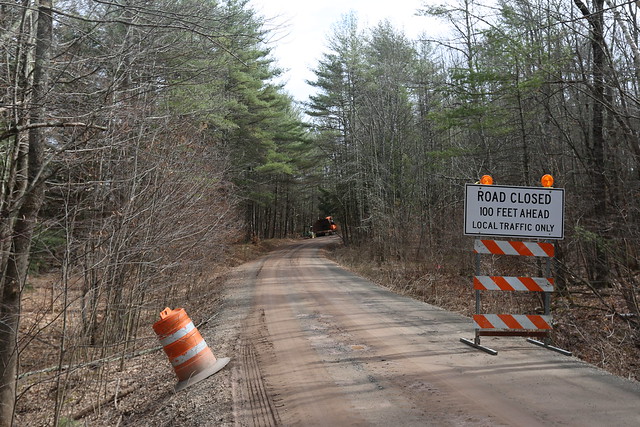FOR IMMEDIATE RELEASE 17-12 Department of Environmental Protection Announces $6.5 Million Roadway Upgrade Near Schoharie ReservoirPhotos of the work are available on DEP’s Flickr PageThe New York City Department of Environmental Protection (DEP) this month began work on a $6.5 million project to upgrade a road that runs along the west side of Schoharie Reservoir. The project comprises several improvements to Intake Road, also known as BWS Road 7, which straddles the border of Delaware County and Schoharie County. DEP will rehabilitate 4.5 miles of roadway, replace one bridge that carries the road over a creek, and clean, upgrade or replace 45 culverts. “Roads owned by New York City in the watershed are important for the operation of our water supply and the safe travel of local residents and visitors,” DEP Acting Commissioner Vincent Sapienza said. “DEP is committed to keeping our roadway infrastructure in a state of good repair to support our operations and fulfill our commitments to watershed communities, which is why we continue to fund and manage projects such as this one at Schoharie Reservoir.” The roadway project alongside Schoharie Reservoir is expected to take two construction seasons, finishing sometime in 2018. Workers this year will focus much of their attention on replacing the Bear Kill Bridge, which carries Intake Road over a creek at the southern end of the reservoir. The replacement of that 60-foot-long bridge is expected to be finished this year. The bridge and that southern portion of Intake Road will be closed to traffic during the bridge replacement. Points to the north—including DEP’s boat launch at Snyder’s Cove—will remain accessible by a detour along Route 23 and Route 30. The project will also include the widening of Intake Road by about one foot, and the replacement of the roadway’s base material, which had eroded over the years. DEP will also perform work on 45 culverts that drain water under neighboring driveways or the road itself. Some of these culverts will be cleaned out, while others will be repaired or replaced. A few new culverts will also be installed to improve drainage along the road. Motorists are encouraged to drive cautiously while the work is ongoing. In addition to the planned closure of the Bear Kill Bridge, some of the work may require intermittent lane or road closures to ensure the safety of construction crews. Drivers should pay close attention to posted signs and flagmen. DEP owns, operates and maintains 57 bridges and 99 miles of roads in the watershed, the vast majority of which encircle reservoirs that comprise the largest municipal water supply in the United States. Schoharie Reservoir can store up to 17.6 billion gallons of water, and it accounts for roughly 15 percent of the drinking water delivered to New York City each day. Schoharie Reservoir collects water from a 314-square-mile watershed. It conveys that water through the 18-mile-long Shandaken Tunnel, which discharges into the Esopus Creek at Allaben, where it flows another 11 miles before entering Ashokan Reservoir. From Ashokan Reservoir, the water is conveyed through the 92-mile-long Catskill Aqueduct to New York City. Schoharie Reservoir was first put into service in 1927. DEP manages New York City’s water supply, providing more than 1 billion gallons of high-quality water each day to more than 9.5 million New Yorkers. This includes more than 70 upstate communities and institutions in Ulster, Orange, Putnam and Westchester counties who consume an average of 110 million total gallons of drinking water daily from New York City’s water supply system. This water comes from the Catskill, Delaware, and Croton watersheds that extend more than 125 miles from the City, and the system comprises 19 reservoirs, three controlled lakes, and numerous tunnels and aqueducts. DEP has nearly 6,000 employees, including almost 1,000 scientists, engineers, surveyors, watershed maintainers and other professionals in the watershed. In addition to its $70 million payroll and $166 million in annual taxes paid in upstate counties, DEP has invested more than $1.7 billion in watershed protection programs—including partnership organizations such as the Catskill Watershed Corporation and the Watershed Agricultural Council—that support sustainable farming practices, environmentally sensitive economic development, and local economic opportunity. In addition, DEP has a robust capital program with $20.7 billion in investments planned over the next 10 years that will create up to 3,000 construction-related jobs per year. For more information, visit nyc.gov/dep, like us on Facebook, or follow us on Twitter. | ||
